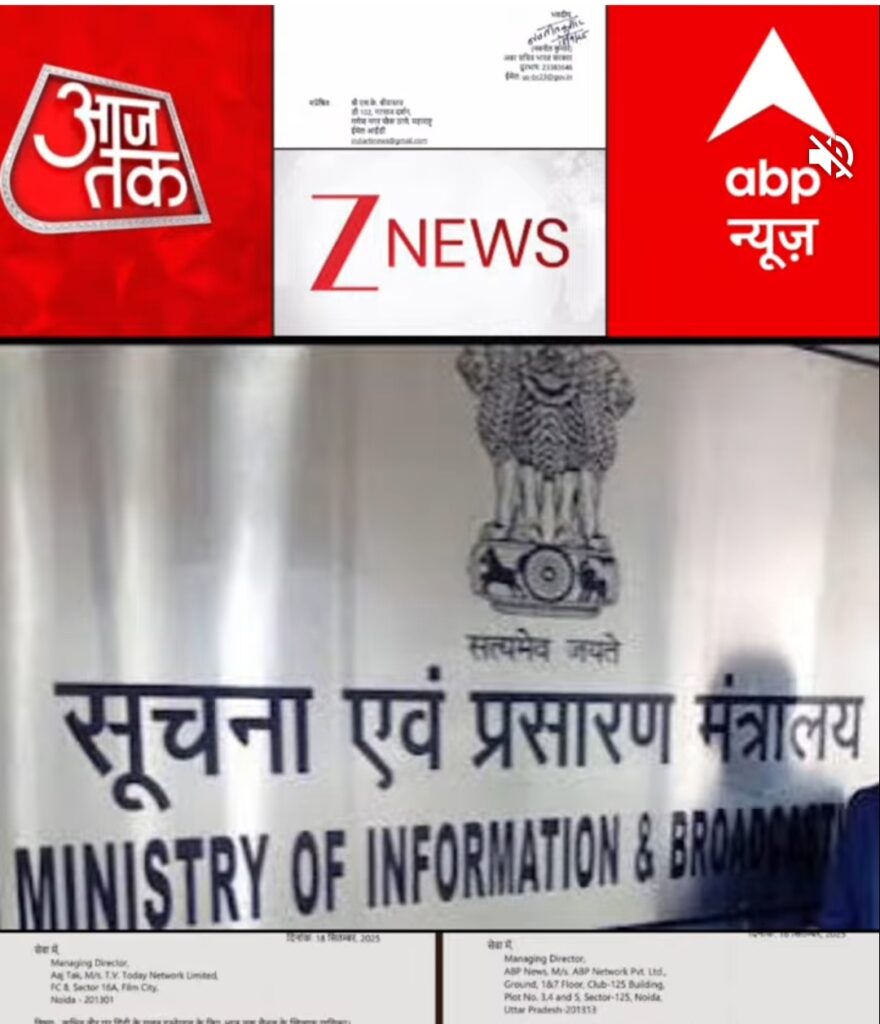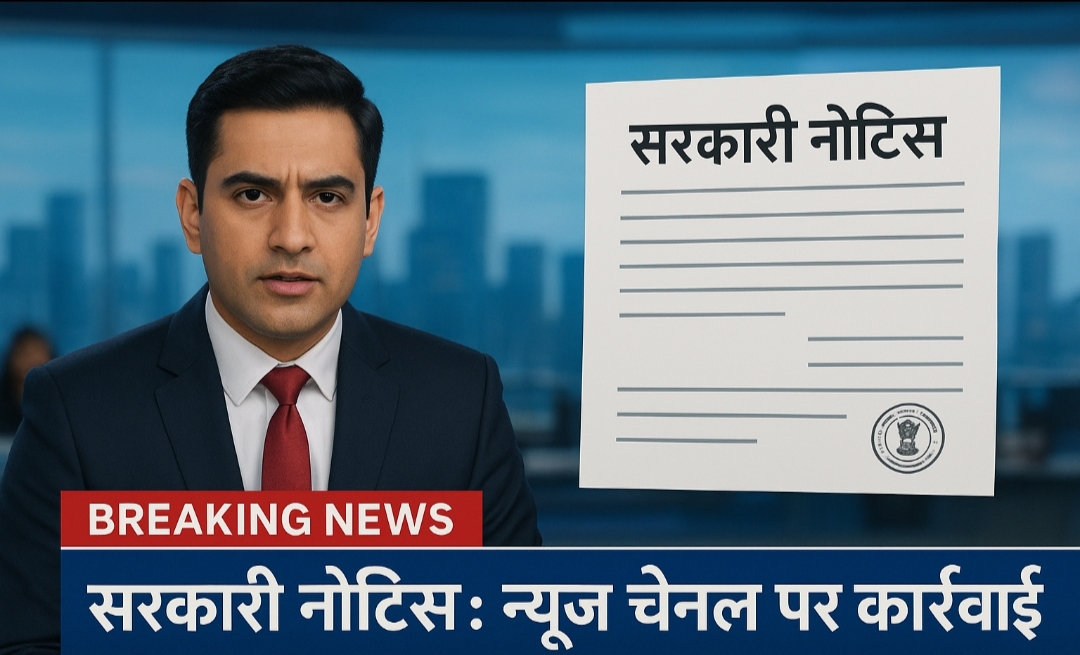symbolic picture
The government’s recent notice to several major Hindi news channels for using Urdu words has ignited debate on language, history, and identity in India. This action highlights longstanding tensions and complexities around the linguistic boundaries of Hindi and Urdu, and raises serious questions about linguistic policy, social cohesion, and political motives.
*Government’s Notice on Urdu Words: Linguistic Purity or Political Agenda?*
Background: The Ministry’s Directive
In September 2025, the Ministry of Information and Broadcasting issued formal notices to five prominent Hindi news channels — TV9 Bharatvarsh, Aaj Tak, ABP News, Zee News, and TV18 — criticizing them for using approximately thirty percent Urdu-origin words in their daily broadcasts.
The ministry directed these channels to appoint certified language experts, ostensibly to ensure “proper” Hindi is maintained in their programming. This move came in response to a legal complaint, which argued that the use of Urdu words amounted to “fraud” and “criminal acts,” as viewers expected broadcasts in “pure” Hindi.
Linguistic Reality: The Twin Languages
Hindi and Urdu are registers of the Hindustani language, a centuries-old linguistic synthesis born in northern India. Both languages evolved from the same roots — Sanskrit and Prakrit — and share their grammar, much vocabulary, and daily usage. The difference lies largely in script and vocabulary choices, with Hindi borrowing more from Sanskrit and Urdu from Persian and Arabic. Historically, these were not seen as opposing languages, but rather as two styles of a common tongue referred to by names like Hindvi and Hindustani.
During British colonial rule, the divide between Hindi (in Devanagari script) and Urdu (in Persian script) was deliberately exacerbated to reinforce religious identities, contributing to communal politics and later, national divides. Yet at the level of everyday speech, there remains vast overlap and mutual intelligibility.
The Irony: Official Communication and Borrowed Words
Notably, critics have pointed out that the ministry’s own letter reprimanding the channels used words like “ghalat,” “iste’mal,” “shikayat,” and “tehat” — all Urdu-origin words, commonly accepted in standard Hindi. This paradox illustrates the impossibility of drawing rigid boundaries between Hindi and Urdu in practice, and the pervasive intermingling of vocabulary in official, media, and popular discourse.
People’s Language: Hindustani as Lingua Franca
The Hindi-Urdu spectrum, commonly known as Hindustani, is the colloquial language of millions across northern India, Pakistan, Bangladesh, and Afghanistan.
Its vocabulary draws not only from Sanskrit, Persian, and Arabic, but also from Turkish, Portuguese, and French — reflecting the subcontinent’s long history of contact, trade, migration, and blending.
For generations, Hindustani has been the means of communication, artistic expression, and cultural exchange across communities and religions. The communalization of language, as seen in the recent ministry action, echoes British “divide and rule” tactics and undermines this history of shared speech.
Language and Identity: Religion, Nationalism, and Power
The drive for linguistic purity has often paralleled efforts to enforce religious or nationalist boundaries.
In the late 19th and early 20th centuries, movements for Hindi and Urdu became proxies for Hindu and Muslim identity politics — with script and vocabulary being politicized beyond their actual semantic differences.
Gandhi, among others, deplored this division and proposed a reunification under the term “Hindustani,” recognizing the artificiality of separation and the day-to-day reality of mutual understanding.Today, to police language along communal lines is to ignore both historical fact and lived reality.
The Role of Media: Freedom and Responsibility
News channels play a crucial part in shaping mass communication and cultural imagination. By targeting the use of Urdu words, the ministry risks stifling the organic evolution of language and restricting the expressive possibilities of journalism. Appointing language experts and demanding “purity” may further politicize linguistic choices, diverting attention from real issues facing the media: accuracy, representation, and independence.
Moreover, such actions send a dangerous signal, implying that certain words — and by extension, their speakers — are not truly Indian, or are somehow suspect. This not only alienates large communities whose identities are interwoven with Urdu but could further fuel social polarisation.
Who Owns Language?
Languages belong to their speakers, not to governments or religions.
The attempt to criminalize or stigmatize the everyday speech of millions ignores history, practice, and the democratic spirit enshrined in India’s constitution. Linguistic choices are informed by centuries of coexistence, and any effort to forcibly separate Hindi and Urdu can only impoverish both languages — and the society that speaks them.
Rather than enforcing arbitrary boundaries, India’s linguistic policy should celebrate hybridity, diversity, and freedom of expression.
The notice to Hindi news channels is not only an attack on linguistic reality but a warning sign for the future of pluralism in Indian democracy.
Hasnain Naqvi is a former member of the history faculty at St. Xavier’s College, Mumbai




